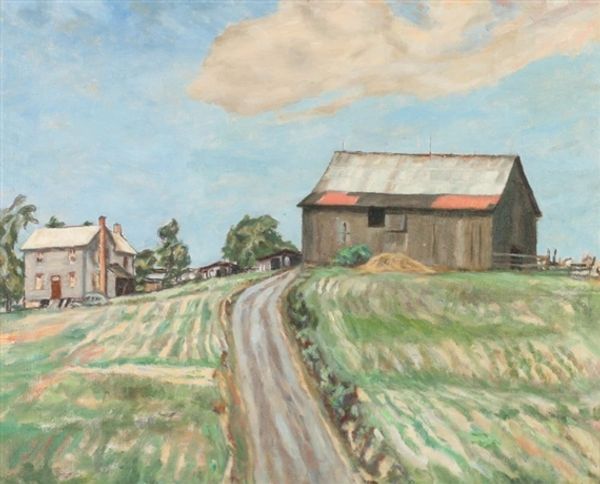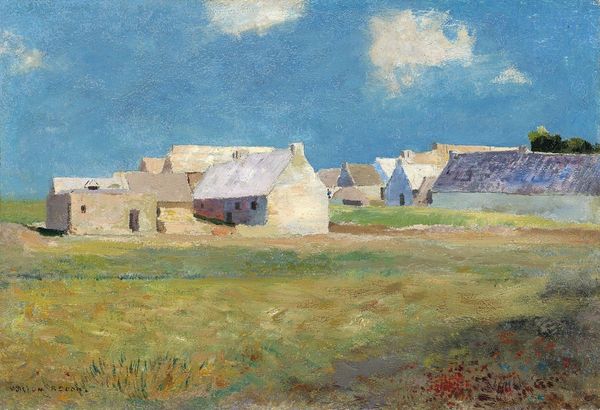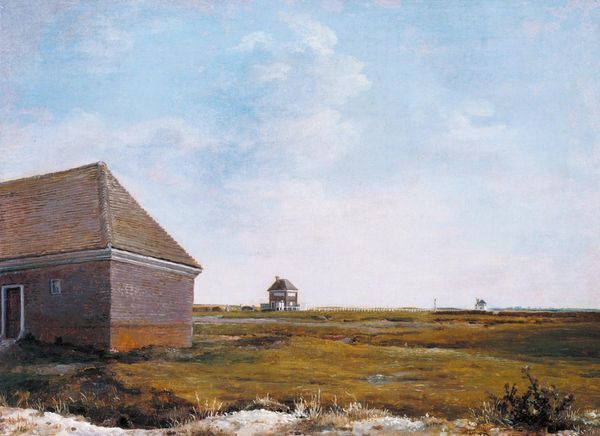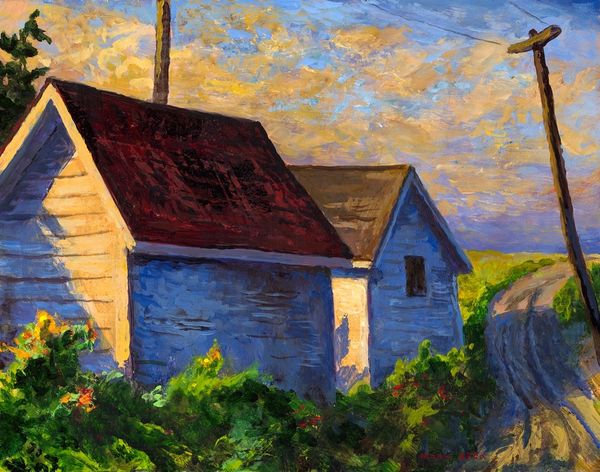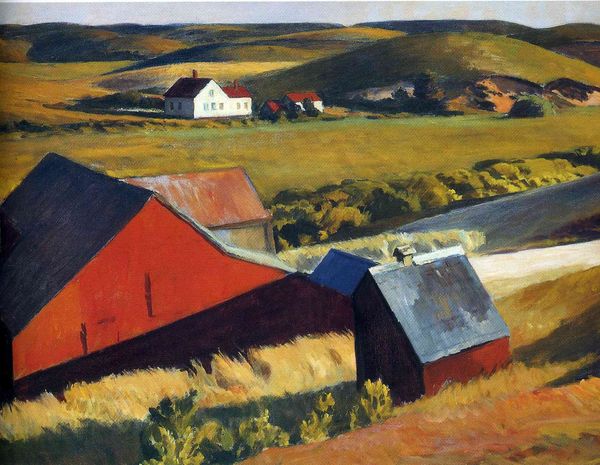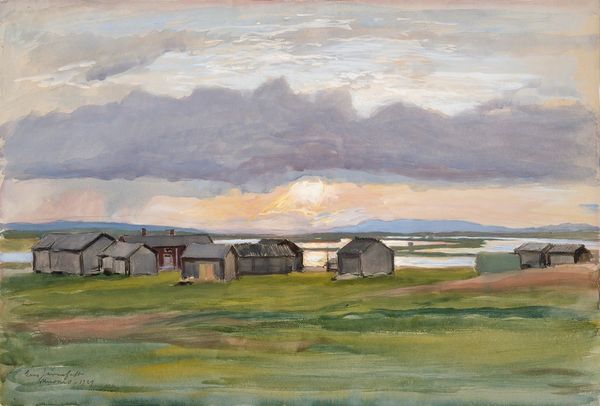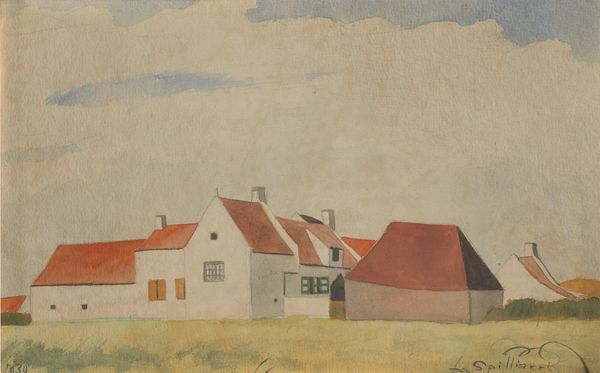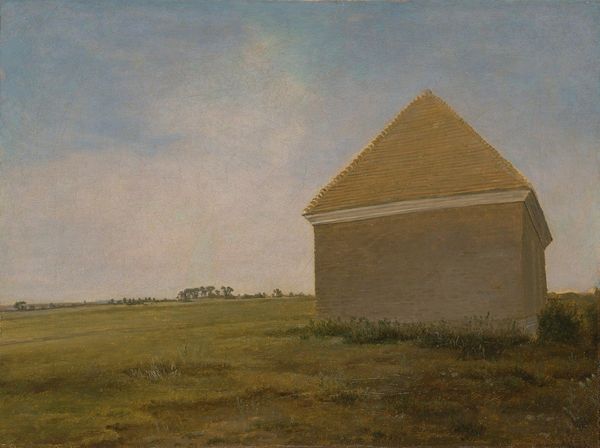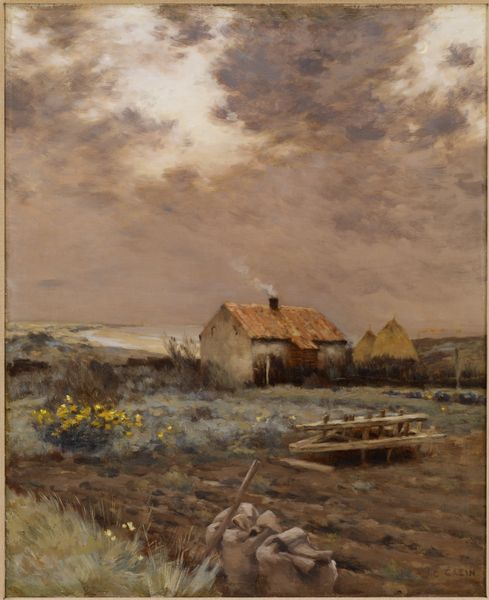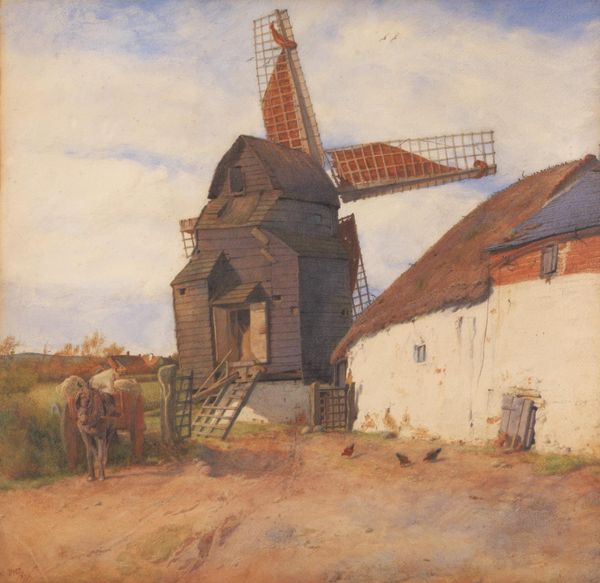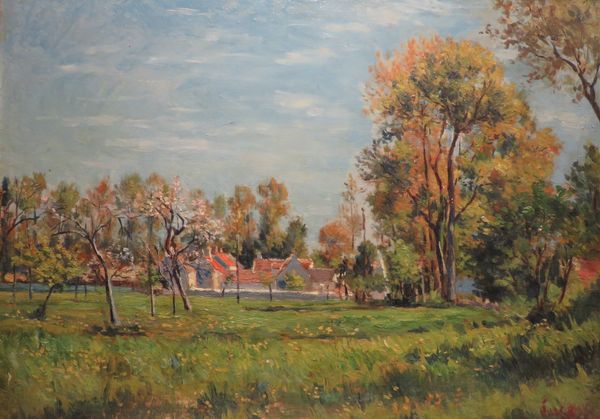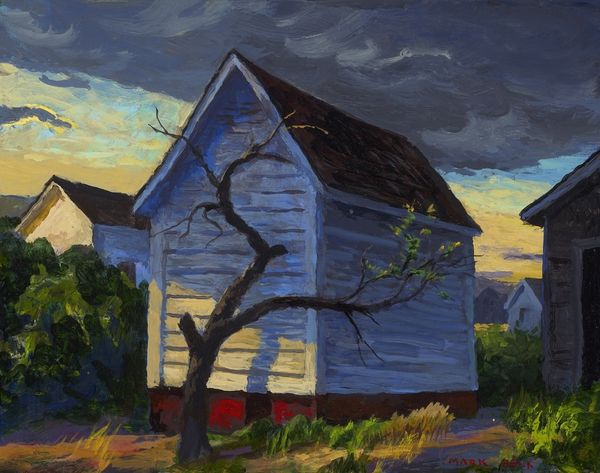
Dimensions: support: 610 x 749 mm frame: 815 x 939 x 111 mm
Copyright: © The estate of Sir William Rothenstein. All Rights Reserved 2010 / Bridgeman Art Library | CC-BY-NC-ND 4.0 DEED, Photo: Tate
Editor: This is "Barn at Cherington, Gloucestershire" by Sir William Rothenstein. It's currently at the Tate. The painting evokes a feeling of quiet stillness, almost like a memory. What symbols stand out to you in this work? Curator: The barn, repeated in various forms, speaks to agrarian life, a potent symbol of sustenance and stability. Notice how the buildings are sturdy, almost monumental. What cultural associations do you draw from this imagery? Editor: I think of self-sufficiency, and connection to the land. It seems nostalgic, almost. Curator: Indeed. The barn as archetype embodies the endurance of tradition. Rothenstein’s choice to depict it bathed in this light further elevates it. What feeling does the colour evoke for you? Editor: A sense of peace, maybe even reverence. I didn’t think about the color before, but it’s true. Thanks for pointing that out! Curator: My pleasure. It is important to consider how symbols function both personally and collectively.
Comments
tate 8 months ago
⋮
http://www.tate.org.uk/art/artworks/rothenstein-barn-at-cherington-gloucestershire-n05664
Join the conversation
Join millions of artists and users on Artera today and experience the ultimate creative platform.
tate 8 months ago
⋮
Rothenstein first rented a cottage at Oakridge Lynch, Gloucestershire in 1912, while making a series of portrait drawings of Rabindranath Tagore. Later that year he discovered an old farmhouse at Far Oakridge, near Stroud, overlooking the Golden Valley. Iles Farm was at that time inhabited by a labourer's family and in need of repair. The Rothensteins purchased it together with fifty-five acres of woodland for 631300. They renovated the house and settled there, keeping a house in the area until the artist's death. Rothenstein's work was especially prolific during his early years there, when he made many pictures of the farm and neighbouring villages: 'In the changing drama of the year I found constant inspiration. In London, when no model came, I would feel at a loss; not so in the country, and the Cotswold buildings are especially paintable. Stone buildings always move me - austere in grey weather, pale, livid even, against a stormy sky, they are warm and sparkling in the sunlight.' (Rothenstein, II, p.274.) In 1927 he bought another cottage, Winstons, also in Far Oakridge, which he rented out while he was working in London. He rediscovered the area as a source of inspiration when he began using the cottage for weekends in the early 1930s: 'I continued to paint farms and barns. I wandered again through the quiet valleys in which lovely villages were hidden.' (Rothenstein, II, p.374.)This picture and a version of the same subject in gouache were exhibited at the Leicester Galleries, London, in October 1938. This work was also exhibited at Bradford City Art Gallery as part of the 1951 Festival of Britain.Further reading:William Rothenstein, Men and Memories, II, London 1932, pp.272-9, 374Robert Speaight, William Rothenstein: The Portrait of an Artist in his Time, London 1962, pp.265-6, 282-3, 379-80Terry RiggsJanuary 1998
